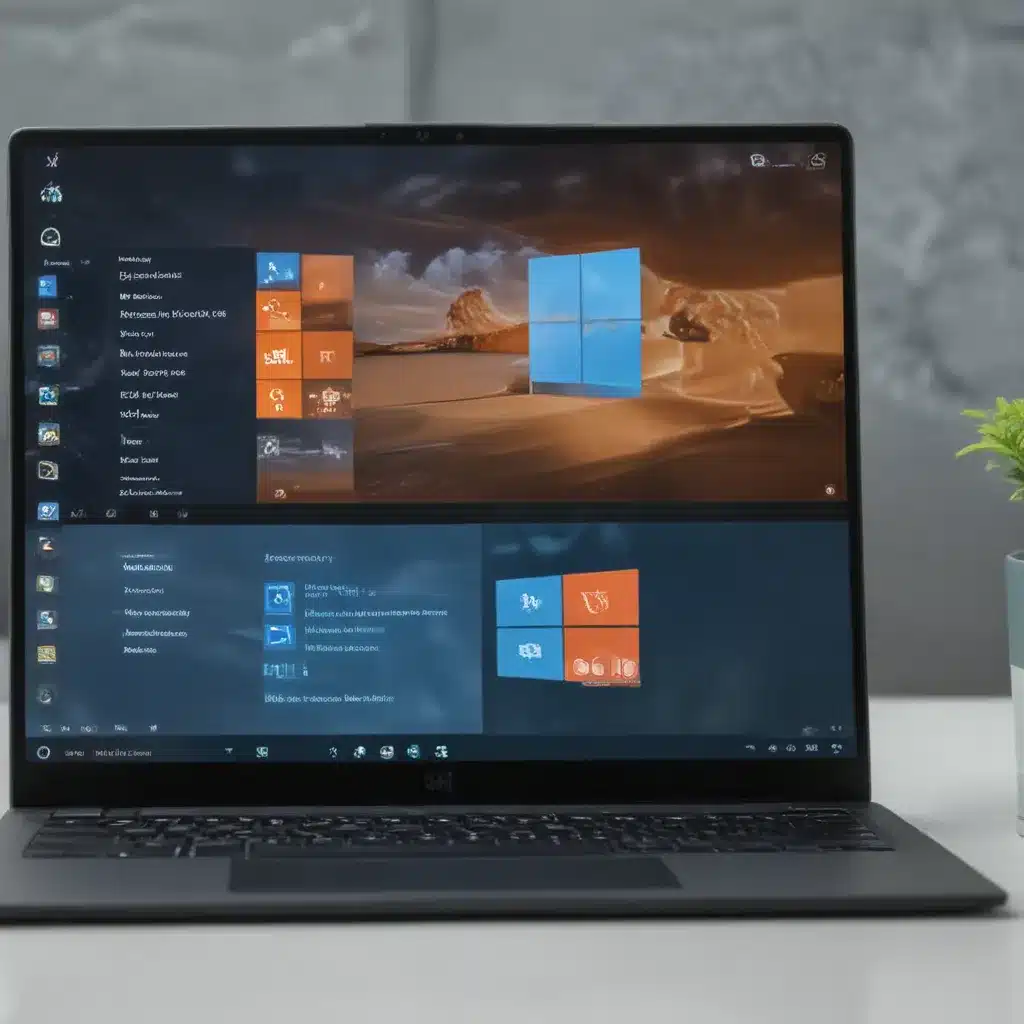
Will My Software Work in Windows 11? Check Here.
Ah, the age-old question that every PC user faces when a new operating system rolls out – will my beloved programs and software continue to function seamlessly, or will I be left in the technological dust? As someone who’s been through the Windows upgrade rodeo more times than I can count, I can assure you, my friends, that the transition to Windows 11 doesn’t have to be a daunting ordeal.
Let’s kick things off with a quick reality check. Yes, the system requirements for Windows 11 are a bit more stringent than its predecessor, Windows 10. But fear not, because with a little bit of digging and a few simple steps, you can determine whether your current setup will play nice with the latest Microsoft masterpiece.
Checking Your Windows 11 Eligibility
The first and most crucial step is to assess your system’s readiness for the Windows 11 upgrade. Thankfully, Microsoft has made this process as painless as possible with the handy-dandy PC Health Check app. Simply download and run the app, and it will give you the lowdown on whether your device meets the minimum requirements for the Windows 11 upgrade.
Now, I know what you’re thinking – what if I’ve recently made some hardware changes to my machine? Well, my friend, Microsoft has got your back on that one too. The PC Health Check app can handle that scenario, and it might even take up to 24 hours for your eligibility to update. If you’re feeling impatient (which, let’s be honest, we all are these days), you can always manually refresh the Windows 11 eligibility assessment using the handy steps outlined in the Microsoft support article.
Understanding the System Requirements
Now, let’s dive a little deeper into the nitty-gritty of Windows 11’s system requirements. According to Microsoft, your device will need to have a fairly modern processor, at least 4GB of RAM, and 64GB of storage. Sounds pretty straightforward, right? But wait, there’s more!
Your machine will also need to have UEFI secure boot capabilities and a Trusted Platform Module (TPM) version 2.0 or higher. I know, I know, it’s like a whole new tech language, but trust me, these are just fancy ways of saying your system needs to have certain security features enabled to keep your data safe and sound.
And let’s not forget about the display requirements. Your device will need to have a high-definition (HD) display that’s at least 9 inches diagonally, with a resolution of 1366 x 768 or higher. Basically, if your screen is big enough to binge-watch your favorite shows without squinting, you’re good to go!
Compatibility Concerns
Alright, now that we’ve covered the basic system requirements, let’s talk about the big elephant in the room – software compatibility. According to Microsoft, changing your hardware doesn’t necessarily mean your device will be offered the Windows 11 upgrade immediately. The rollout will happen gradually, based on factors like hardware eligibility, device reliability, and age.
But what about your beloved programs and applications? Well, the good news is that most of your existing software should continue to work seamlessly on Windows 11. Microsoft 365 subscription benefits, for example, will carry over to the new operating system, so you won’t have to worry about losing access to your favorite productivity tools.
However, it’s always a good idea to double-check the compatibility of any mission-critical software before making the big leap. Just because something worked flawlessly on Windows 10 doesn’t necessarily mean it will play nice with the new features and under-the-hood changes in Windows 11. So, be sure to do your research, check with the software vendors, and maybe even consider running a test drive in a virtual environment before committing to the upgrade.
Making the Leap to Windows 11
Alright, so you’ve checked your system’s eligibility, you’re confident that your software will continue to function, and you’re ready to take the plunge. Fantastic! But before you go ahead and hit that upgrade button, let me offer you a bit of friendly advice.
First and foremost, make sure to back up all of your important data. You never know what might happen during the upgrade process, and the last thing you want is to lose your precious files and documents. Here at IT Fix, we offer a range of data backup and recovery services to keep your information safe and secure, so be sure to check us out if you need a little extra help.
Secondly, be patient and give yourself plenty of time for the upgrade to complete. Windows 11 is a significant update, and the installation process can take a while, especially on older or less powerful machines. Grab a snack, put your feet up, and let the magic happen.
And finally, don’t be afraid to reach out for help if you run into any issues along the way. The IT Fix team is always here to lend a hand, whether you’re troubleshooting compatibility problems, navigating the new interface, or just need a friendly ear. We’re in this together, my friends, and we’re here to make sure your transition to Windows 11 is as smooth and stress-free as possible.
So, what are you waiting for? Go forth, conquer the world of Windows 11, and may your software continue to flourish like a well-tended garden. Happy upgrading!












